How to Grow Cabbage
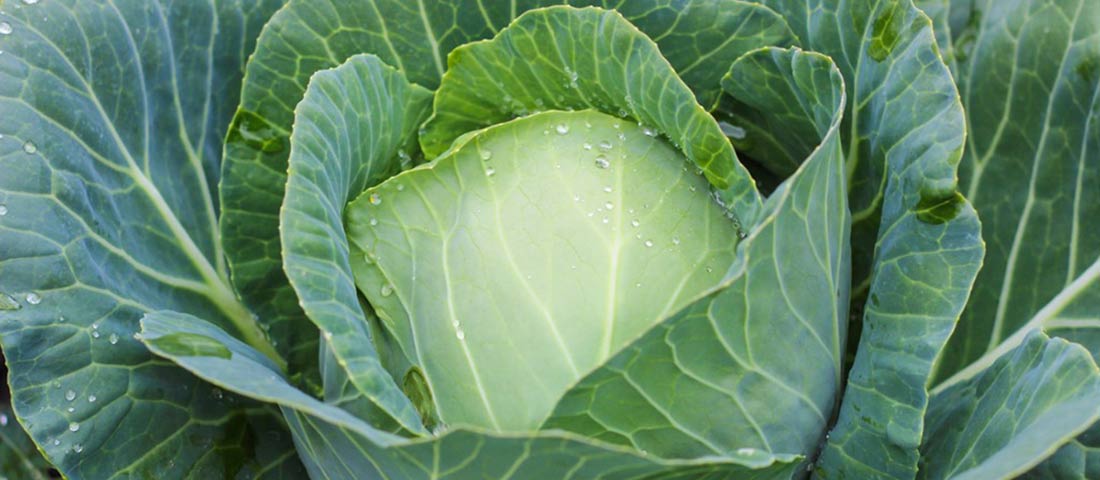
A healthy cabbage crop can bring some excitement to your garden and your palate. Grown for its firm, leafy heads, this crisp vegetable transforms everything from slaws and salads to sauerkraut and kimchi. If you have cabbage on your garden wish list, you'll be happy to know this cabbage is simple to grow. Follow these tips on how to grow cabbage and enjoy homegrown cabbage of your very own.
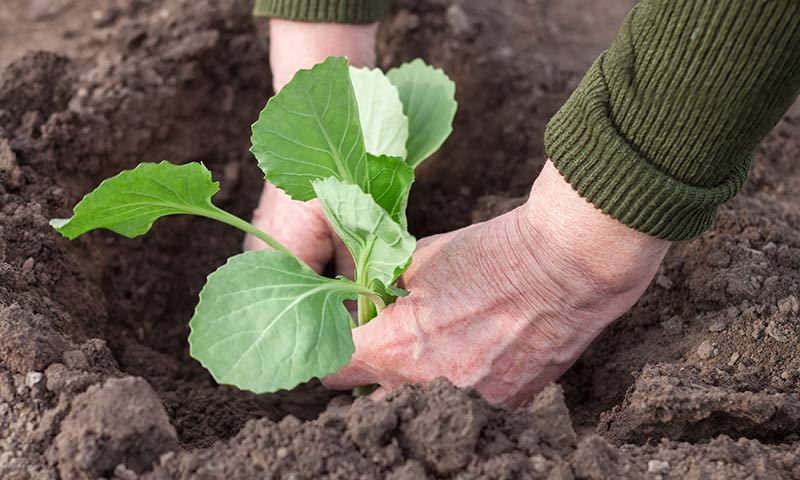
Cabbage transplants go outside about four weeks before your last spring frost.
CABBAGE-GROWING BASICS
Cabbage belongs to a group of plants in the mustard family known as "cole crops," a name derived from the Latin word meaning "stalk." Cabbage is closely related to broccoli, Brussels sprouts, cauliflower and kale — so close they're the same plant species. You'll find cabbage in varied colors, from pale creamy green to dark purple-blue.
Like other cole crops, cabbage doesn't like heat. It grows best when air temperatures range from 55 to 75 degrees Fahrenheit.1 But this preference for cool weather is a bonus for you. You can plant cabbage twice a year and harvest in spring and fall. If you live in mild, moderate climates, you can harvest cabbage all winter long.
Spring-planted cabbage must mature before summer heat arrives. The short spring season causes most gardeners to grow cabbage from seedlings known as transplants in spring. But when summer soil is warm and cool fall temperatures are ahead, you can plant cabbage seeds directly into garden soil.
Insect pests and soil-borne diseases that bother cabbage can stick around year after year. So don't grow any cole crops in the same location two years in a row. Allow two to three years in between instead. Rotating crops regularly discourages pests and diseases.
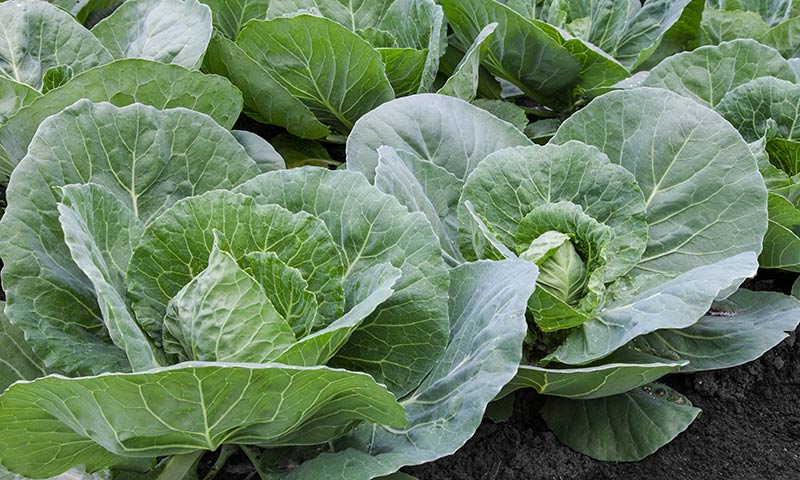
Cabbage are heavy feeders that need regular fertilization as they mature.
HOW TO PLANT AND TRANSPLANT CABBAGE
Grow your cabbage in a site with full sun and well-drained soil rich with organic matter. Cabbages are very heavy feeders, so incorporate organic compost and a balanced fertilizer such as Pennington Rejuvenate Plant Food All-Purpose 4-4-4 into your garden before you plant. Soil pH of 6.5 to 7.5 is ideal for cabbage crops.1
Cabbage transplants are four- to six-week-old seedlings. Gradually acclimate your cabbage plants to outdoor temperatures before you plant. Transplant your cabbage plants into the garden three to four weeks before your area's last expected spring frost. If you're growing in containers, the same guidelines apply.
Transplant seedlings 12 to 18 inches apart. If you plant in rows, leave 18 to 36 inches between rows. If rows aren't your style, that's fine. Just leave plenty of growing space on all sides. Plant transplants so they're just slightly lower in the ground than in their growing pot.
Plant garden seeds for fall cabbage directly in the garden. Depending on the variety, cabbage takes 60 to 100 days to mature. Your seed package will tell you what to expect. Northern gardeners may need to plant in July to make sure cabbage matures before winter. Direct plant cabbage seeds 1/4 inch deep in groups of three to four seeds, spaced 12 to 18 inches apart. As seedlings grow, thin each group to one plant.
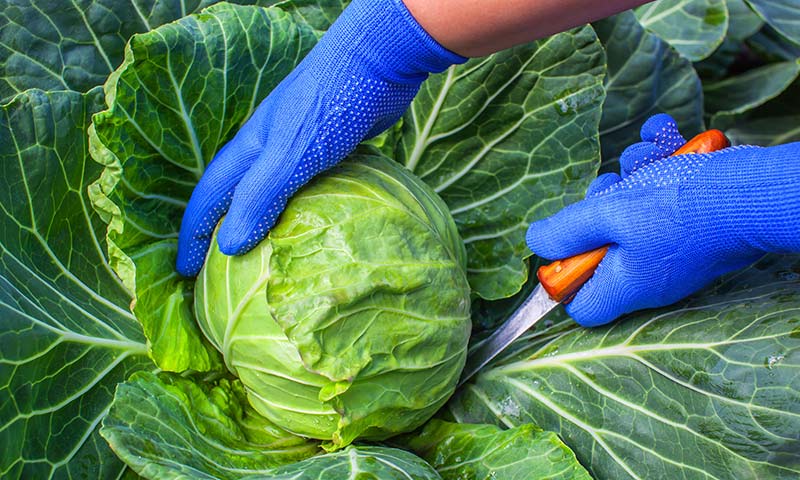
Harvest your cabbage head when it is full and firm.
HOW TO CARE FOR CABBAGE PLANTS
Consistent water is essential for crisp, firm, flavorful cabbage. Ensure your cabbage gets 1 inch of water per week from rainfall and irrigation combined. One inch wets the soil to about 6 inches deep. With rich, moisture-retentive soil, one weekly watering should do. Sandy soil requires more frequent watering.
Once cabbage plants reach 4 inches tall, start feeding to fuel their growth. A natural-based fish fertilizer such as Alaska Fish Fertilizer 5-1-1, applied every three weeks through the growing season, provides cabbage nutrients and organic matter to your soil.
Weed control is also crucial. But like all cole crops, cabbage plants have shallow roots. Be gentle when weeding or hoeing near cabbage. A layer of compost mulch or clean, weed-free straw helps discourage weeds and keep soil moisture and temperatures from fluctuating.
Cabbage is ready to harvest once the head is full and firm. Use a sharp knife to remove the head from the center of the large outer leaves atop the stalk. Mature cabbage can stay in the garden for a time, as long as temperatures are cool. But mature heads can split if cabbage takes up too much water too fast in heavy rains.
If you're not ready to harvest mature cabbage, minimize the risk of splits. Sever one side of the plant's roots with a trowel or spade. If heavy rains hit and cabbage splits, harvest split heads right away. Cut out the split section and enjoy the rest.
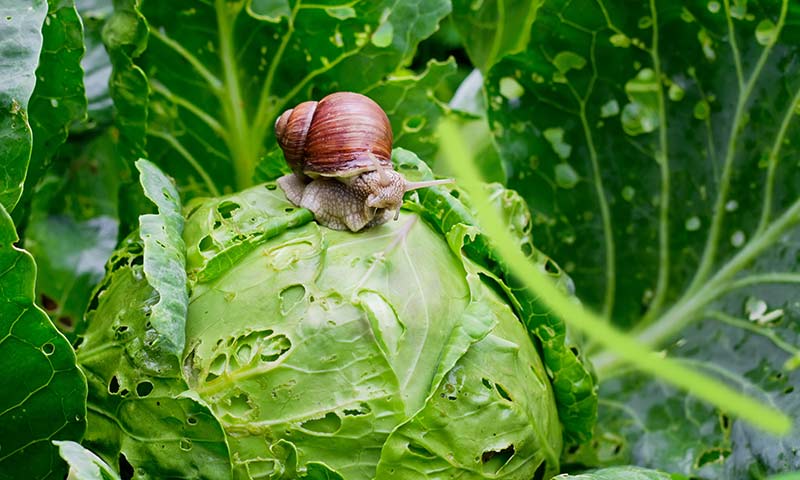
Protect against slugs and snails to prevent holes in heads and leaves.
TROUBLESHOOTING CABBAGE PROBLEMS
Cabbages are prone to some soil-borne bacterial and fungal diseases such as clubroot and black rot, which leave cabbage with mottled, wilting, yellow leaves. Strict crop rotation and garden sanitation are good defenses, as are clean, sterile garden tools. Protect cabbage against fungal diseases such as Alternaria leaf spot and downy and powdery mildew with preventative treatments of Daconil Fungicide Ready-To-Use.
Slugs and snails turn tender cabbage heads into hole-riddled food waste overnight. Because slugs and snails aren't insects, regular insecticides won't stop them. Corry's Slug & Snail Killer ready-to-use pellets attract and kill slugs and snails and stop their feeding. Plus, people and pets can reenter treated garden areas immediately.
For cabbage pests such as caterpillars, flea beetles, imported cabbage worms and cutworms, turn to a broad-spectrum insecticide such as Sevin Insect Killer Ready To Use2 to kill pests and protect your cabbage crop. With just a bit of effort, you can grow cabbage packed with flavor and potential — from healthy raw snacks to sharable fermented treasures. At Corry's brand, we're here to help you learn and experience all the satisfaction your garden can bring. We've been protecting plants for more than 70 years, so plant your cabbage with confidence. Happy gardening!
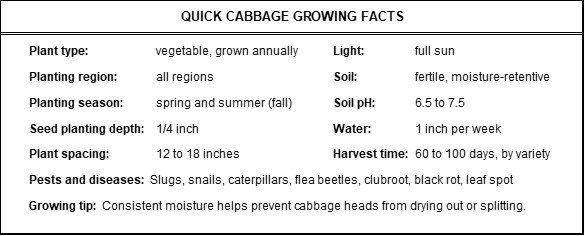
Always read product labels thoroughly and follow instructions, including guidelines for pre-harvest intervals (PHI) and application frequency.
Corry's is a registered trademark of Matson, LLC.
Lilly Miller and Alaska are registered trademarks of Central Garden & Pet Company.
Daconil is a registered trademark of GB Biosciences Corp.
Sevin is a registered trademark of Tessenderlo Kerley, Inc.
Source:
1. Johnny's Selected Seeds, "Cabbage – Key Growing Information."

